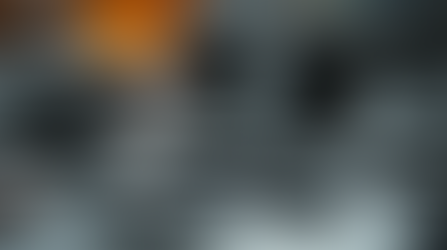Innovative Solutions for Industrial Painting Challenges
- Greg Bittner
- Jul 21
- 4 min read
In today's manufacturing world, industrial painting is a critical process that ensures durability and aesthetic appeal. From automobiles to heavy machinery, the right paint quality can enhance a product's lifespan and performance. However, the industrial painting process comes with its own set of challenges. With the advent of new technologies and innovative techniques, businesses can overcome these challenges to achieve optimal results.
Understanding Industrial Painting Systems
Industrial painting systems encompass a variety of techniques and tools used to apply paint in large-scale environments. Unlike standard painting applications, industrial systems require specialized equipment and methods to manage the complexities of surface preparation, paint application, and curing. These systems serve a diverse range of industries, including automotive, aerospace, and manufacturing. Painting systems can vary from manual spray techniques to automated robotic applications, depending on the needs and scale of production.

Strategies to improve efficiency and reduce costs are crucial as industries adopt advanced industrial painting systems. Innovations range from new types of coatings to sophisticated application technologies that increase accuracy and reduce waste.
The Role of Advanced Coatings in Industrial Painting
One of the most significant advancements in industrial painting is the development of advanced coatings. These modern paints offer improved performance characteristics such as corrosion resistance, UV protection, and fast-drying capabilities. For example, epoxy and polyurethane coatings are known for their durability in harsh environments.
Statistics reveal that companies switching to advanced coatings can see a reduction in maintenance costs by as much as 30%. This can lead to significant savings over time, making the initial investment in high-quality coatings worthwhile.

When selecting a coating, it is essential to consider the specific requirements of the project. Factors such as exposure to chemicals, temperature fluctuations, and surface types will influence the choice of coating. Partnering with experienced suppliers can help identify the best materials for unique industrial applications.
Embracing Automation in Painting Processes
With the evolution of technology, automation has become a game-changer in the industrial painting landscape. Robotic painting systems can apply coatings more consistently and efficiently than manual techniques. Automated solutions reduce human error, improve safety, and enhance productivity.
Businesses that have integrated robotic systems into their painting processes have reported efficiency boosts of over 50%. This leap has allowed companies to scale operations without sacrificing quality. Moreover, automation enables the use of sophisticated software for monitoring and adjusting the painting process in real time.

Implementing automation, however, is not without challenges. Companies must evaluate the return on investment and consider training personnel to work alongside these new technologies. Those willing to invest in this direction will position themselves for long-term success in a competitive market.
Optimizing Surface Preparation Techniques
Effective surface preparation is paramount in achieving high-quality paint finishes. Irrespective of the type of coating used, if the substrate is not properly prepared, the results can be unsatisfactory. Traditional methods include sandblasting and chemical cleaning, but newer technologies like ultra-high-pressure water jetting and laser cleaning are gaining popularity.
These innovative cleaning methods minimize dust and chemical residues, ensuring a clean surface for paint application. Moreover, they have less environmental impact compared to traditional methods. Recent studies indicate that industries employing rigorous surface preparation procedures can increase adhesion rates by up to 60%.
One crucial aspect is to choose the right surface preparation technique based on the substrate material and the intended paint type. Companies may benefit from consulting with industrial painting solutions providers to find the most effective methods.
Implementing Quality Control Measures
Quality control in industrial painting is essential to ensure that the finished product meets the desired standards. Investing in quality control techniques can mitigate the risk of defects and rework. Essential quality control measures include material inspections, monitoring application thickness, and real-time feedback during the painting process.
Technologies like infrared thermography and non-destructive testing can identify issues that may arise during or after the coating application. These advancements ensure that coatings cure correctly and achieve their intended lifespan.
Regular training for staff on quality control practices is also vital. A well-educated workforce becomes an asset in maintaining the integrity of the industrial painting process and instilling a culture of quality awareness.
Continuous Innovation in the Industrial Painting Sector
The stakes in industrial painting are ever-increasing as industries strive for higher quality standards while reducing costs. Continuous innovation plays a central role in meeting these demands. Companies that embrace new technologies, techniques, and training methods will find opportunities for growth.
Fostering a culture of innovation can also enhance the workplace. Encouraging employees to suggest improvements or explore new solutions can yield valuable insights into operational inefficiencies. Setting up partnerships with research institutions or technology providers can also pave the way for new product developments and applications in industrial painting.
As businesses continue to evolve, they must remain adaptable to new challenges and solutions appearing in the industrial painting landscape. Investing in innovative solutions can serve both immediate and long-term benefits for the organization.
Final Thoughts on the Future of Industrial Painting
The future of industrial painting is bright, full of potential breakthroughs and innovations. The integration of advanced coatings, automation, and quality control measures is transforming the industry. As challenges arise, innovative solutions can help tackle paint application issues effectively and efficiently.
By continually focusing on advancements, implementing new strategies, and prioritizing quality, businesses will thrive in this competitive environment. Organizations that explore the latest developments in industrial painting solutions will enjoy a strong market position and increased customer satisfaction.
In an ever-changing landscape, staying ahead with industrial painting innovations is crucial for maintaining a competitive edge. Embracing new technologies is not merely an option; it is a necessity for those wishing to lead in the industrial painting realm.







Comments